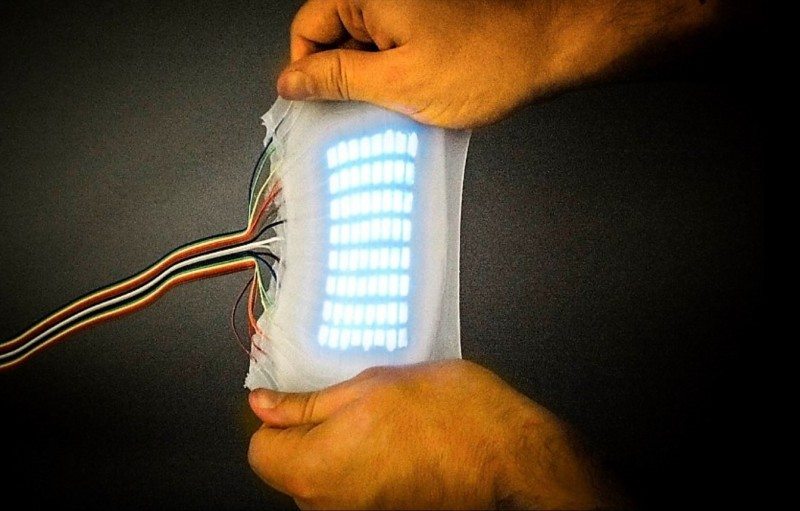Stretchy Robot Shows off Octopus-Like Skin
Alexander Neil / 8 years ago

While some may be impressed by the upcoming flexible displays targetted at consumer electronics, a team of engineers at Cornell University have developed a far more exciting version inspired by the octopus. Published today in Science, a report describes the development of a “skin” capable of high levels of flexibility, the ability to change colour, illuminate and even sense pressure.
Compared to that of a cephalopod, a human’s skin is relatively uninteresting, however as this study shows, these researchers were capable of identifying multiple ways of achieving the numerous properties of octopus skin with technology. The engineers focused on making artificial “skin” that can light up as well as react to touch while simultaneously handling being stretched to several times the original size. So far, three proof of concept designs for the technology has been shown off, with a common element being the use of thin rubber pixels which can be arranged in strips, grids or even covering the body of a robot. These pixels are each made up of five individual layers with flexible silicone on the outside, covering two transparent electrodes all on top of a central luminescent phosphor layer which colours based on electrical stimulation.
As shown in the video, the technology is already capable of staying illuminated even while being stretched like gum. In a sheet, it is capable of being bent out of shape in many ways and even being rolled up tightly. Finally, a robot seeming somewhat reminiscent of a caterpillar illuminates in multiple colours as each of the air chambers it uses to crawl inflates.
The possibilities of this technology appear to be endless, presenting the ability to make soft robots capable of displaying information across a skin of screens. One application identified by the researchers is providing the ability to illuminate in different colours “in response to mood or the tone of the room.” As is clear from the video, the technology is currently somewhat limited and there is a way to go in making the technology higher resolution, capable of a wider palette of colours and thinner before it could have a place in consumer electronics. For now, maybe they could make us a light up Stretch Armstrong?
Image credit to Cornell University




















